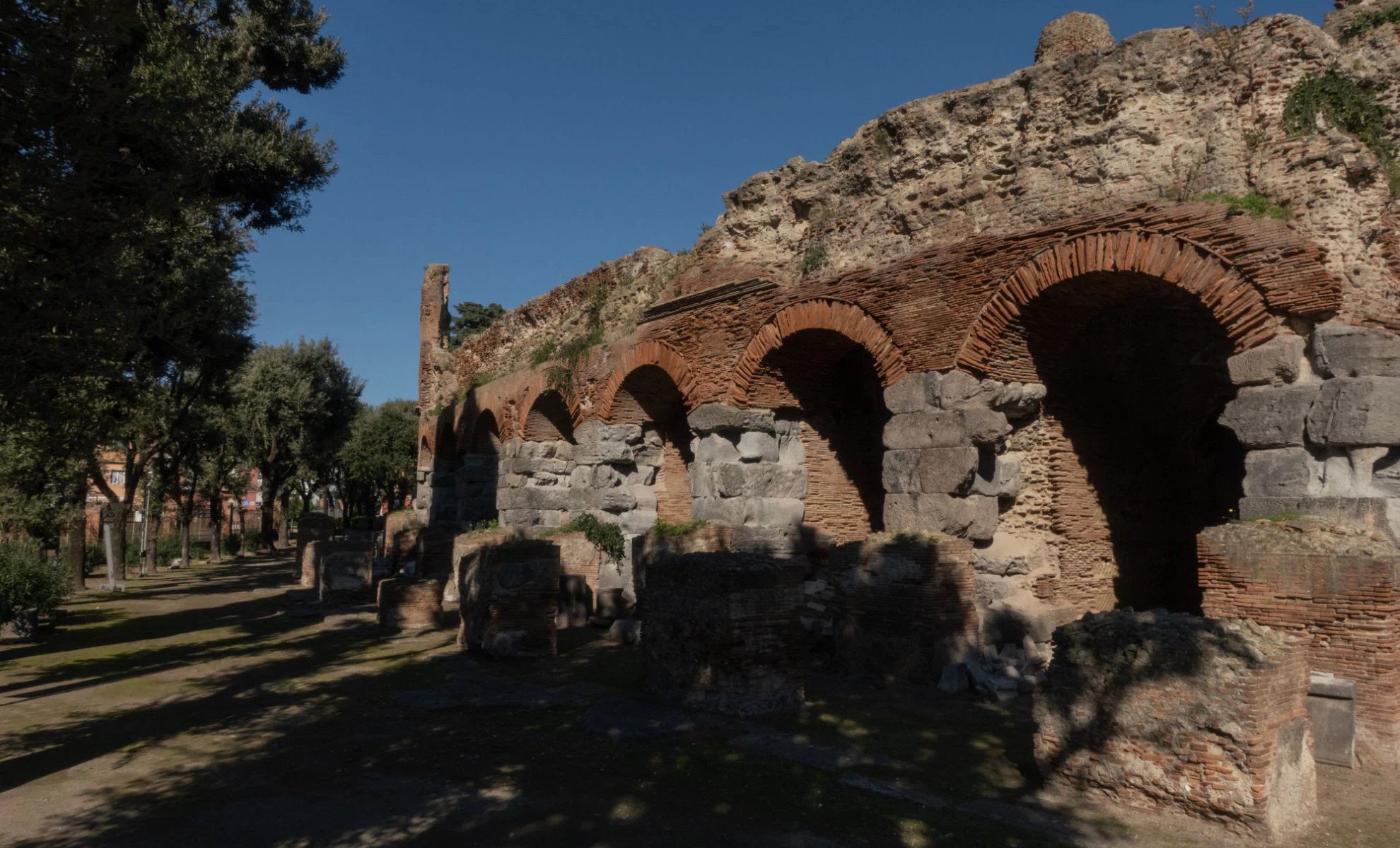«The people anxiously desire only two things: bread and circus games», so thought Juvenal. In a nutshell, it sums up the interests of the Roman plebs, or at least of those who gave consent to the powerful in exchange for bread and free gladiatorial shows.
This expression, beyond social criticism, leaves no doubt as to the entertainment preferences of the ancient Romans: the thrill generated by a gladiatorial fight, the spectacle of life and death in the arena was unrivalled.
Ph. Anna Monaco

It is no coincidence that as soon as a new large city was conquered, an amphitheatre had to be built. This is also the case in Pozzuoli, where two buildings used for games have been preserved, one dating from the Republican period, known as the Minor, and one from the Flavian period, the third largest in Italy.
After the more famous Flavian Amphitheatre in Rome and the Campanian Amphitheatre in Santa Maria Capua Vetere, there is the Flavian Amphitheatre in Pozzuoli with its majestic arena and its evocative, perfectly preserved underground areas.
Ph. Machi di Pace

In the bowels of the amphitheatre, among the arches and corridors, the voices of those who worked there in the past chase each other to guarantee surprising scenic effects, such as the arrival in the arena of a ferocious beast, hoisted up through a system of pulleys. As the animal emerged from the trapdoor, the spectacle became even more exciting: not only lions and tigers, but also bears, elephants and ostriches, used for venationes - fights with gladiators - and for damnatio ad bestias, i.e. exposing the condemned to death to the beasts, with no chance of escape.
Ph. Anna Monaco

Ph. Anna Monaco

Unless the condemned man was in the odour of sanctity, like the Christian martyrs and St Gennaro, who passed through the atrocious torture in the amphitheatre of Pozzuoli and came out unscathed: at the sight of the saint, the lions became docile and quiet, forcing their torturers to opt for decapitation at the Pozzuoli sulphur mine. The episode is recounted in a beautiful painting by Artemisia Gentileschi, kept in Puteoli's cathedral, while in the amphitheatre there is a small chapel called San Gennaro ad carceres, in memory of the saint's imprisonment.
“Vetus proverbium est gladiatorem in arena capere consilium: aliquid adversarii vultus, aliquid manus mota, aliquid ipsa inclinatio corporis intuentem monet”.
“There is an old adage about gladiators, that they plan their fight in the ring: as they intently watch, something in the adversary's glance, some movement m bJl hand, even some slight bending of his bod, gives a warning”.Seneca - Epistulae Morales Ad Lucilium
The sentencing of the condemned to death was one of the moments of the long day's entertainment in the amphitheatre, interspersed with more playful moments, culminating in the actual combat. Weapons, shin guards, hand protectors, shields of different sizes and the gladius: this is how the pairs of gladiators faced each other, encouraged and cheered by the shouts of the crowd in the cavea seats.
Ph. Anna Monaco

Between exchanges, studied movements and well-placed blows, the show went on until one of the two succumbed. At that point, from the stands, one could hear either iugula, hit him in the jugular, or mitte, put down your weapon, and the epilogue was not always the death of the defeated. Surely, however, fame, money and the attentions of women awaited the winner.

